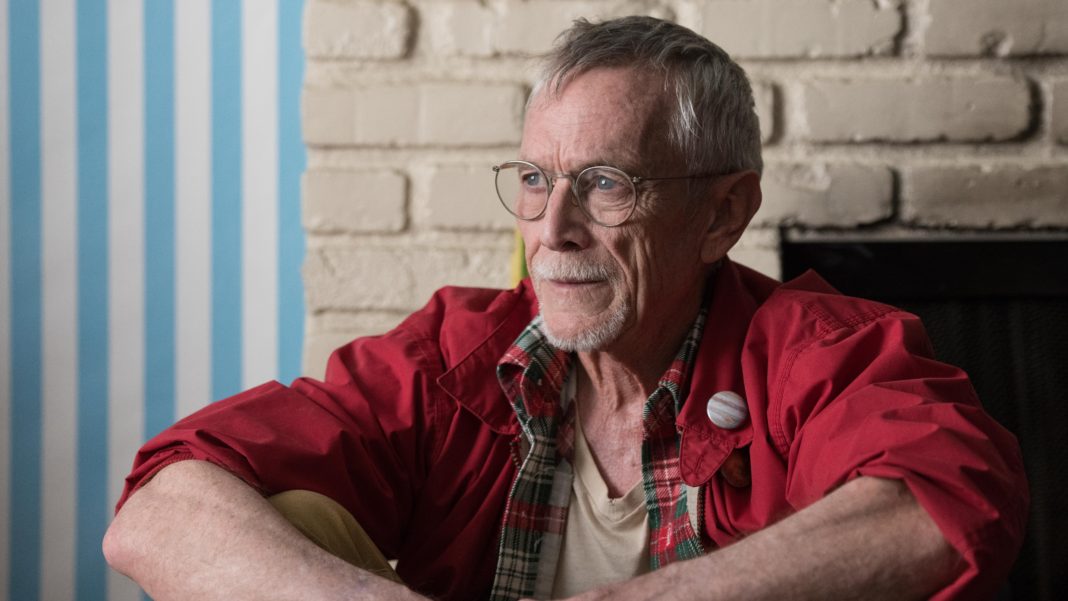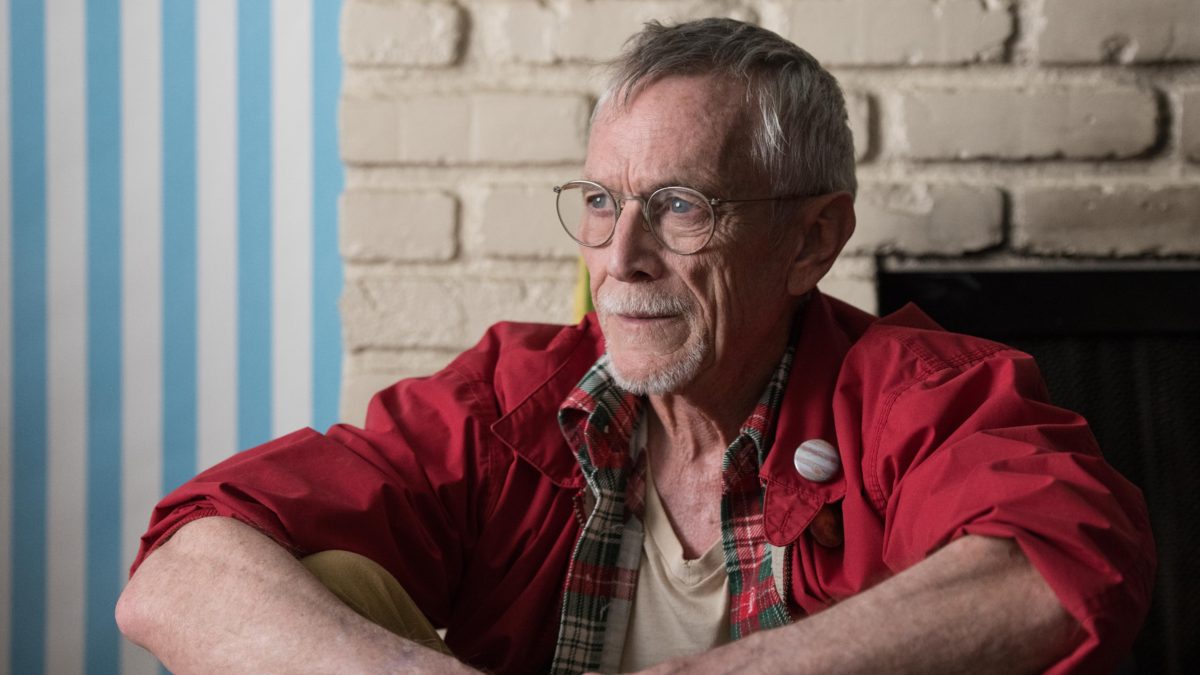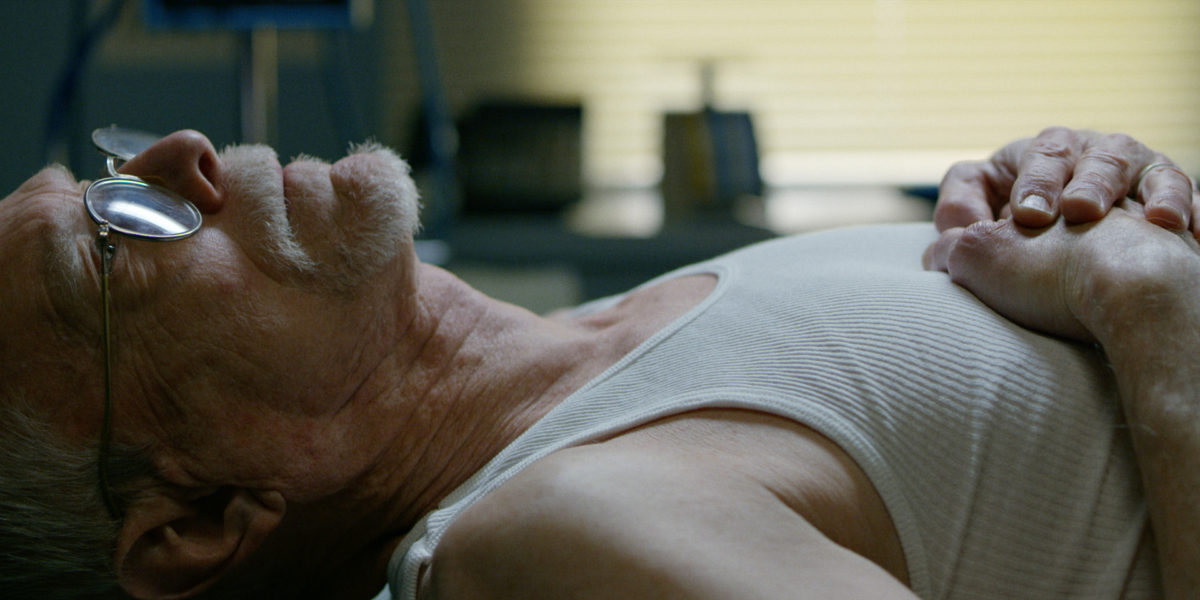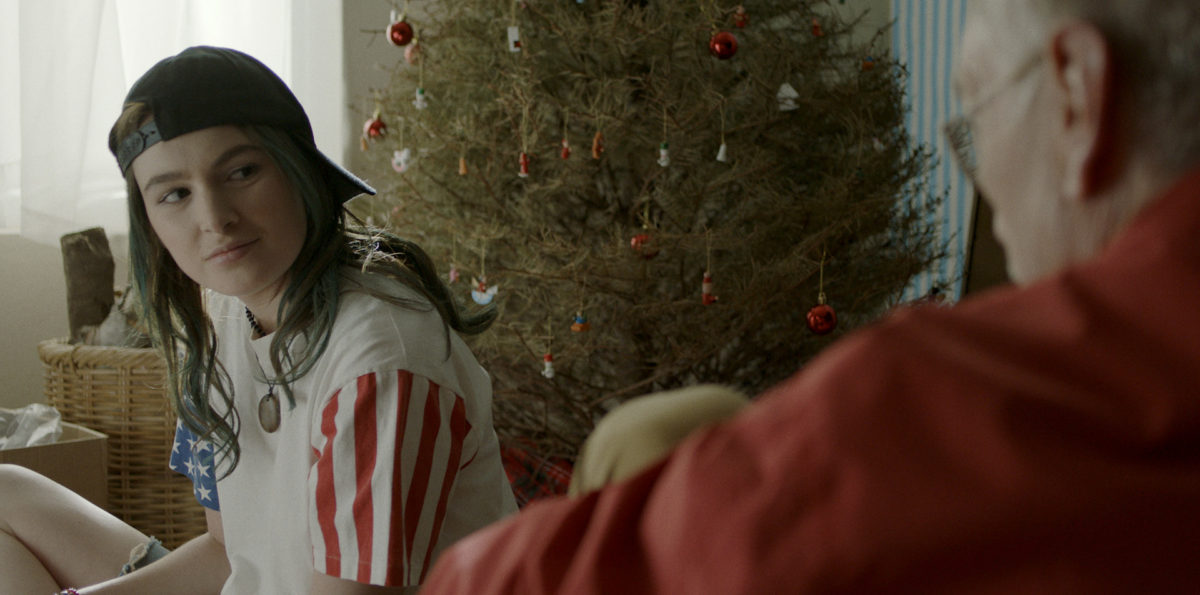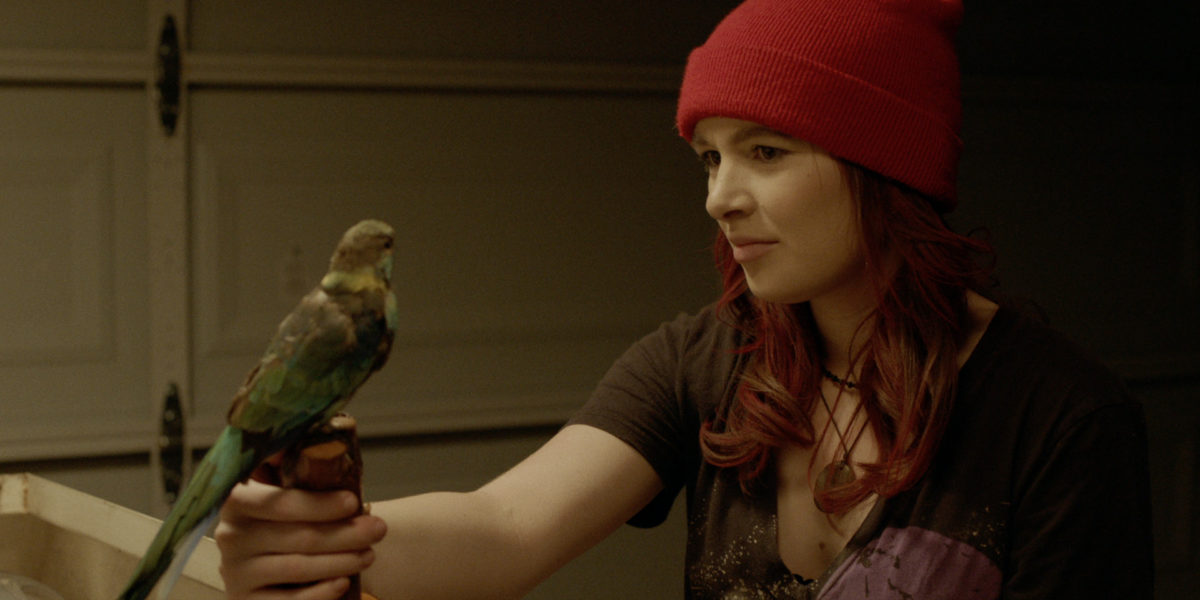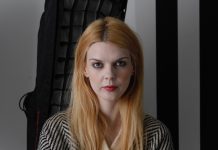Another new Short Film stirring interest on the Short Film Festival circuit is Colin West’s Here & Beyond, which focuses on the issue of dementia as an old man struggles to cope in a world where he has lost a loved one through circumstance.
Film and TV Now had the pleasure of speaking with the director as he reflected on his experiences with the film.
FILM AND TV NOW: Your film takes the sensitive issue of dementia and transposes it within a fantasy context, using a science style show as a backdrop. Were you an avid Science student as a teenager?
COLIN WEST: I grew up on science. My mother worked in software development for tech and educational companies and my father was a mathematician-turned computer scientist, so science and math were fundamental to my upbringing. Bill Nye was a hero of mine and I watched his show on repeat. My dad was also a huge sci-fi guy so when I was a kid he turned me onto the classic writers like Bradbury and Asimov. So yes, science (and, by extension, sci fi) is integral to most of my work and this is no exception – it is a kind of mix between reality and fiction. Though the film is about dementia, it is not explicitly stated in the film. The “condition” Mac gets diagnosed with is a kind of science fiction version of memory-loss meant to illicit the same feelings, but in a sort of genre-specific way. I made that choice in order to keep the film subjective to the main character, Mac. To him, a scientist at root, the disease is a very alien thing not grounded in reality whatsoever. It goes against everything his logical brain told him about the reality of the world around him – a kind of breaking down of fact into emotion. It was the same arc we used as a structure during the editing process of the film, to thread the film together using emotion rather than plot.
FTVN: The film also focuses on connecting with the community, through the teenage girl who is struggling to fit in with all the moving every six months or so, coupled with an old man struggling with his illness. Has the film been shown to dementia experts?
CW: The film has not been specifically targeted toward dementia experts, per say, but inevitably after every screening someone will come up and tell me their own personal experience with dementia or Alzheimers affecting their friends or family. They seem to really connect with the film. In that way, the film itself has been a kind of support for those dealing with any form of memory loss and has built a community around it. One in 10 American’s over the age of 65 has some form of Alzheimers, so many people have a personal connection to it.
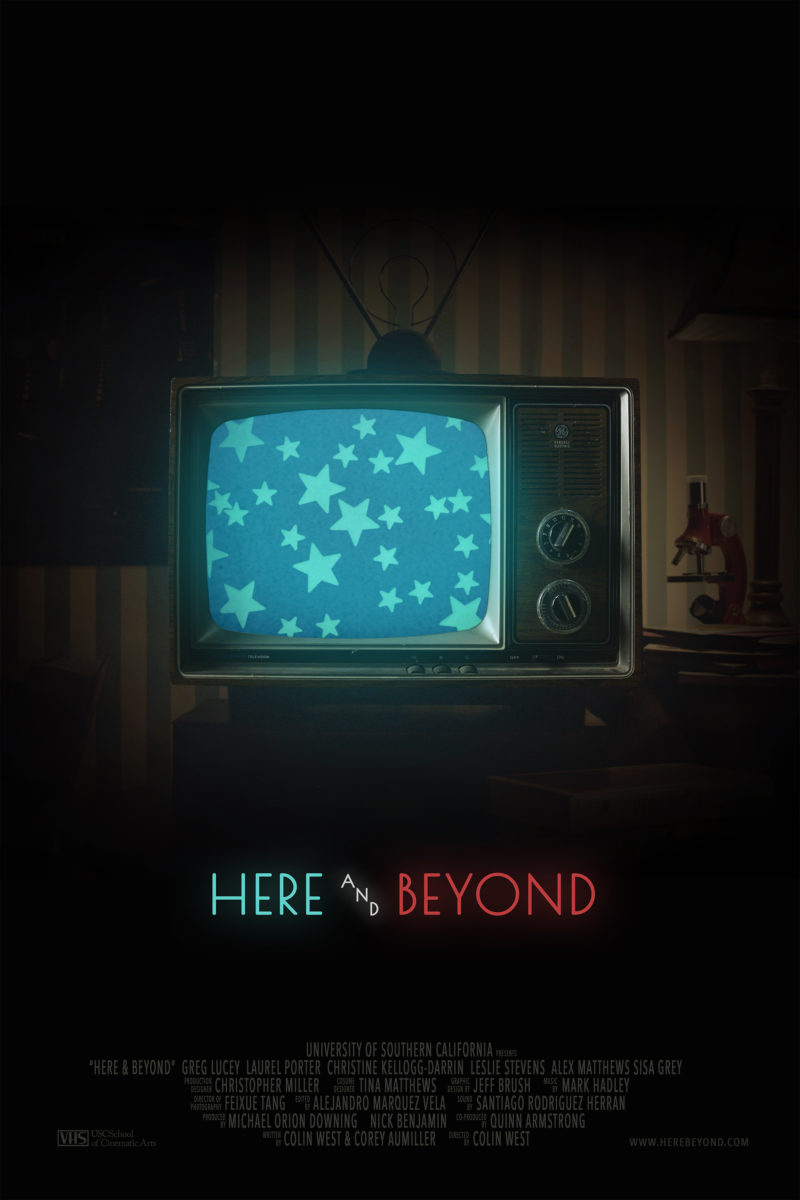
FTVN: The final credit says University of South California, a faculty that has yielded some of our greatest film-makers like George Lucas and John Carpenter. What was the school like when you attended and how many of the cast and crew are part of that for you?
CW: Yep, this was my MFA thesis film from USC. In fact, it was also a thesis film for the Cinematographer (Fei Tang), Editor (Alejandro Marquez Vela), and the Sound designer (Santiago Rodriguez Herran). The school is indeed steeped in film history and many of my favorite filmmakers went there including Dan O’ Bannon, Matt Reeves, and Richard Kelly. So it’s definitely good company to be in. The energy coming from my fellow students while I was there was unmatched and inspired me daily. We pushed each other, supported each other, and managed to have a lot of fun along the way.
FTVN: You dedicate the film to Marge and Lyle at the end. Was this a love letter in honour of their memory and was the condition something that affected them greatly, both indirectly and directly?
CW: Marge and Lyle are my grandparents on my father’s side. Disease was a part of their lives for a long time. The last thirty years of my grandfathers life was spent taking care of my grandmother who suffered from Parkinson’s disease. Soon after she passed, signs of his memory-loss became evident and eventually he was diagnosed with dementia. He actually passed away a few months ago, right after the film was completed, and this story was meant to be a kind of subjective look at what it might have been like to be in his shoes in his later years. Plus, so much of the films setting was drawn from my adventures around their house as a child – the dated Christmas decorations, the garage bulging with junk, the old TV – It just seemed right to dedicate the film to them.
FTVN: What was the start-off point for the concept and screenplay?
CW: I co-wrote the film with my frequent writing collaborator, Corey Aumiller, and we based the story on my relationship with my grandfather. You wouldn’t believe how many versions of this script there were… I’m almost embarrassed about it frankly. We spent a few months in the script phase trying to determine how far we wanted to push the time travel conceit. That was the main thing that took time (no pun intended). In the end, since we’d worked the script so much, there were many elements of the writing that sort of spoke to each other and overlapped. This really helped when we got to the edit and wound up cross-cutting the climax of the film. Those scenes ended up literally talking to each other.
FTVN: Tell us about your cast and crew.
CW: One of the last credits gives ‘Special Thanks’. We are curious to know what these people were contributing to the film.
This film would not be possible without every single person in that special thanks list. They did everything – they read and gave notes on scripts and edits, they gave me invaluable advice, they donated gear and services, and they listened and gave support when I needed it most. They’re the foundation on which this film was built.
FTVN: You are also credited with the Animation on this film. Tell us how you came to create the specific style of the film.
CW: I’ve been making stop-motion animations for a very long time. A huge inspiration for my animation style came from watching the Terry Gilliam-animated sequences from The Monty Python skits with my dad. I specifically remember him renting The Search for the Holy Grail from Blockbuster one time and as a young kid I was absolutely terrified of all the live action parts (that killer bunny!), but loved the animated interludes. They were fun! I guess the sort of cut-paper collage-style animation really rung a cord with me. It had such a unique flavor to it and allowed for such a juxtaposition of style and color. It was also, well, really funny.
FTVN: Your costume designer is Tina Matthews. Tell us about how you came up with some of the ideas for that and were a lot of the clothes the cast’s own contribution?
CW: Tina Matthews is an all star costume designer as well as a creature actor. She only got to show off about 10% of her skills on this film. Her specialty is in large-scale, sculptural costume work like fantasy creatures, robots, and animals – that kind of thing. And she’s damn good at it. We’ve worked together many times in the past, often with her fabricating giant multifaceted costumes and then getting in the suit and operating the characters herself – I’d put her right up there with Doug Jones. As far as this film goes, Greg Lucey, the lead actor, contributed a few items of clothing (he let us come over and pick through his closet one day), but most of the costumes were either hand-made or specifically procured for the shoot. Tina is a master of picking through thrift stores for unique pieces. My thing is, I always want every character in the film to have a unique enough costume that someone could dress up as them for Halloween and others would be able to recognize them as that character. Tina definitely did that on this one and found a very cohesive, thematic, and coordinated set of costumes for the film.
FTVN: Your composer is Mark Hadley. Tell us about his background.
CW: Mark is a prolific musician. Not only does he do instrumentation for shows like Modern Family and Twisted, but composes scores for numerous films and trailers, and still somehow manages to find time to be at the helm of two music groups, the pop group More Giraffes with Keeley Bumford, and Hark Madley, his solo project. It’s funny, I recently got to meet the special effects legend, Douglas Trumbull, who told me that he considers the soundtrack to be the most important part of any film. This is coming from a man who has spent his life making VISUAL effects. And honestly, I could not agree more. Mark really hit a home run on this one. We had a great time coming up with the kind of kids science TV show theme song and then expanding that into the underscore of the rest of the film. It was all modular synth – his set-up is insane. Wires and flashing lights everywhere, like some kind of giant Apollo control panel or something. I could not have been happier.
FTVN: Tell us about your working relationship with your VFX and Post-Production Supervisor, Alejandro Márquez Vela.
CW: I feel like I should have attributed a writing credit to Alejandro for all the work he did to help re-write the film in post-production. It was a challenging edit, not because of the footage we got, but rather because the film was meant to follow a kind of emotionally driven arc rather than a plot driven arc. That is no easy task for an editor, but Alejandro pulled it off. He is also an incredible director in his own right and I learned an immense amount working with him. He was able to draw connections and make cuts I would have never dreamed could work. I remember the first time he showed me the way in which he’d cross-cut the climax and I was completely floored. He managed to find a perfect balance of comprehensibility, emotion, and wonder.
FTVN: Finally, what has been your experience on the Festival circuit with the film and what is the next phase for it and your career?
CW: We’ve had a wonderful festival run thus far and we’re only just getting started! We were thrilled to have premiered in December at the Other Worlds Austin Film Festival and were really happy to have won the Best Short Script award there. Our festival run is now gaining momentum and after Cinequest, one of the largest festivals we’ve screened in to date, we’ve partnered up with our publicist, London Flair PR, to try to keep the momentum going. As far as what’s next, at the moment I have a few scripts getting out and about town that I’d like to direct, one of which is the feature version of this short film. I’m also working to finish up a film I produced called Survival Skills and always have a slew of short films I’m trying to get off the ground.


